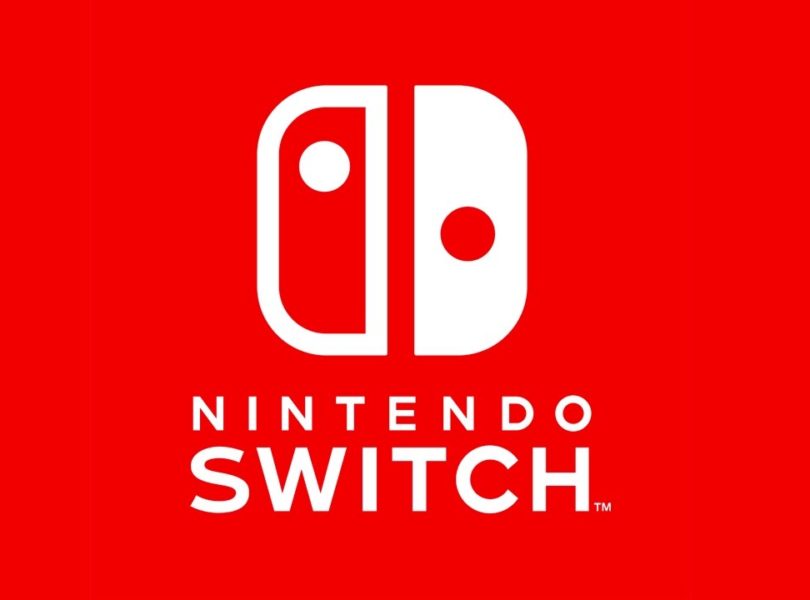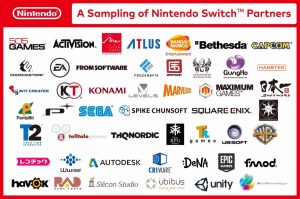On the 17th of March 2015, during a joint press conference with Japanese mobile developer DeNA, Nintendo announced to the world that they were not only working on a new system, code and ‘NX’ but also a relationship with the previously ignored mobile platform. Five months out from the two year anniversary of that announcement, and after a seismic shift in philosophy following the announcement of Super Mario Run on iOS in December, the officially revealed, fully realised and finally named Nintendo Switch will be in stores, homes and backpacks across the world in March 2017.
Before I give initial impressions, here is a full analysis of the 3 minute (ish) reveal trailer. One thing that the Wii got so right and the Wii U got drastically wrong was its messaging. From the get go, the concept is exemplified: a tennis game which you control by swinging the controller. A dark room with the all too familiar Wii U swan song NX Switch launch title ‘The Legend of Zelda- Breath of the Wild’ is being played in the comfort of home on a big TV. Then a family pet needs a walk. The rumours swirling around for months and the console’s main hook are immediately realised. The much repeated name (during the trailer) along with a snappy animation and logo appear. The striking and simple red and white motif attempt to imbed the name ‘Nintendo Switch’ into consumer’s brains all the way through the holiday season and sustain momentum into March. The controller segments are detached and slipped onto each side of a screen slate. Its name is as swift, catchy and universal as the Wii was, with a trendier angle, which is shown in various scenarios through the trailer.
The gentleman takes his dog for a walk and perches on a park bench attempting to take down a sizeable foe, away from the TV.
The other long-standing rumour is finally put to rest, as we are now in an airport. The Nintendo switch will use cartridges, known as game cards. Sitting in his seat on the plane, the player now detaches the two controller segments, flips out a mini stand and holds the controller in a similar fashion to a wireless Wii remote and nunchuck. What is really interesting about this scene is the game he is playing. It seems to resemble an Elder Scrolls game which, if true, would be a first for both a portable and Nintendo console. It highlights both my first positive and negative point about the system, but I will come back to it.
The traveler again shows off the previously seen controller segments connected to each side of the screen, but once home, appears to put the whole console in its docking station and use a dedicated twin stick controller with the same layout as the Xbox consoles.
Now getting ready for a road trip, the screen is fitted into a seat mounted bracket, the controller segments detached and a game of local multiplayer Mario Kart is showcased.
Next is a floodlit game of basketball, complete with backwards caps and high-fives. At half time, two consoles are put back to back to show a four player game of what looks like NBA2K.
Cut to a lady playing what is obviously the console’s Mario game. It appears to have elements of both 3D world and Mario Sunshine, embracing both 3D exploration and bite sized platforming. Replicating the first scenario, the system is played outside, but this time is introduced to a group of friends. Whether this implies the next Mario is multiplayer is wild, yet plausible and will be revealed in time.
Finally, and maybe crucially, is Nintendo’s newest, freshest and most successful IP: Splatoon. Different teams of four strategize, discuss and play, all connected by independent systems, until they all come together in an epic e-sport arena. One final look at the logo and a reassurance of a March 2017 release.
I have to admit I am impressed with the messaging. There was no “do this with the new controller” rhetoric that hurt the Wii U so badly. The name and the logo were clear, precise and catchy. Not only that, the reality of the situations and realisation of the concept were handled so much better than the Wii U. Single player experiences seamlessly coexist with portable multiplayer which not only allow non owners to play, but they will WANT to get one to develop their character, practice their skills or just introduce their new group of friends and players. I think my two main concerns are the two aspects I’m most excited about. Seeing games like Skyrim or NBA 2K on the go is almost too good to be true. The released third party developer partnership list is incredible, almost unrealistically so. Second is the multiplayer. The Splatoon and Mario Kart concept pieces perfectly explain and justify the system’s existence. Nintendo can rely on great multiplayer experiences for everyone on the go – for fun or for glory – however third party support is just as important. This was a tight, concise and consistently interesting reveal, but fulfilling the potential in terms of games and getting price (and, boringly but relevantly, power and battery life) right is Nintendo’s next and arguably even more important task.




